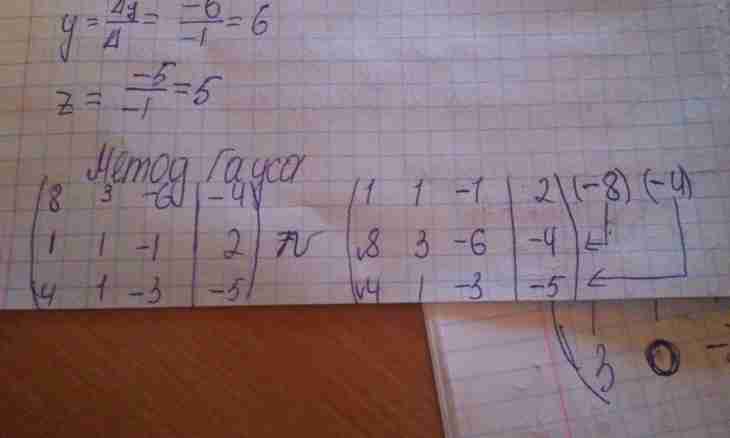A solution of a matrix in classical option is found by means of Gauss's method. This method is based on a consecutive exception of unknown variables. The decision is carried out for an expanded matrix, that is with the included column of free members. At the same time the coefficients making a matrix as a result of the carried-out transformations form a step or triangular matrix. Rather main diagonal all coefficients of a matrix, except free members, have to be brought to zero.
Instruction
1. Define compatibility of a system of the equations. For this purpose count a rank of the main matrix And, that is without column of free members. Then add a column of free members and calculate a rank of the turned-out expanded matrix of V. Rang has to be other than zero, then the system has the decision. At equal values of ranks there is the only solution of this matrix.
2. Lead an expanded matrix to a look when on the main diagonal units are located, and below it all elements of a matrix are equal to zero. For this purpose divide the first line of a matrix into its first element so that the first element of the main diagonal became equal to unit.
3. Take away the first line from all lower lines so that in a feather column all lower elements addressed in zero. For this purpose multiply at first the first line by the first element of the second line and take away lines. Then similarly multiply the first line by the first element of the third line and take away lines. And so continue with all lines of a matrix.
4. Divide the second line into coefficient in the second column so that the following element of the main diagonal on the second line and became equal in the second column to unit.
5. Take away the second line from all lower lines in the same way as it is described above. All elements, subordinate concerning the second line, have to address in zero.
6. Similarly carry out formation of the following edinichka on the main diagonal in the third and the next lines and zeroing of subordinate coefficients of a matrix.
7. Then lead the received triangular matrix to a look when elements over the main diagonal also represent zero. For this purpose take away the last line of a matrix from all higher lines. Multiply on the corresponding coefficient and subtract drains so that column elements where in the current line there is an edinichka addressed in zero.
8. Carry out similar subtraction of all lines as it should be from below up, all elements above the main diagonal will not be nullified yet.
9. The remained elements in a column of free members are also the solution of the set matrix. Write down the received values.

